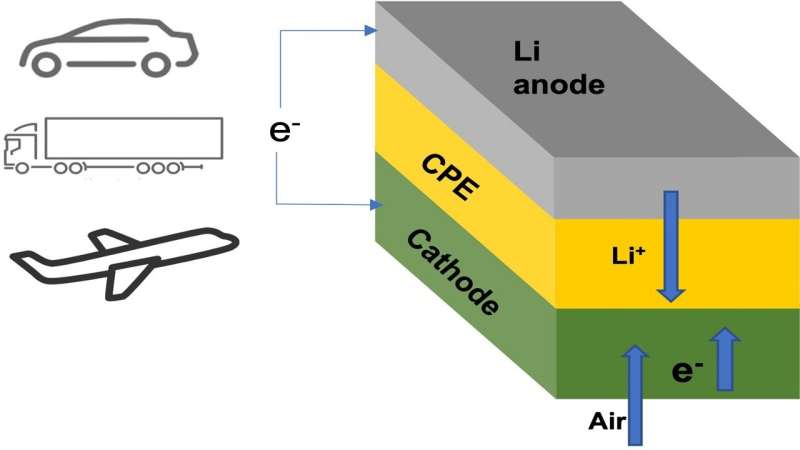US researchers have made a groundbreaking lithium-air battery that has four times the energy density of its lithium-ion counterpart. This could make electric cars go much farther between charges. The lithium-air battery, which was made by scientists at the Illinois Institute of Technology (IIT) and the Argonne National Laboratory of the U.S. Department of Energy (DOE), could be a big step forward for electric cars, which have been criticized for their short range.
The cutting-edge lithium-air battery could make electric cars last longer and make users less worried about range. In the future, the battery might be used to power long-haul vehicles as well as domestic airplanes. An oxygen-based lithium battery has been a goal of scientists at Argonne for more than ten years, according to Larry Curtiss, an Argonne Distinguished Scholar. People are thinking about making lithium-air batteries the next generation of batteries after lithium-ion batteries because they are expected to have the most energy per unit of weight of any battery technology.
The development of lithium-air batteries
In earlier versions of the lithium-air battery, the lithium in a lithium metal anode travelled through a liquid electrolyte during the discharge to react with oxygen, creating lithium peroxide (Li2O2) or superoxide (LiO2) at the cathode. During the filling process, these components are separated into lithium and oxygen. This starts a chemical reaction that releases energy when it’s needed.
The team’s new lithium-air battery, however, has a solid electrolyte made of a ceramic polymer material that allows chemical reactions that result in the production of lithium oxide (Li2O) during discharge. Rachid Amine, a chemist at Argonne, says that to make lithium superoxide or peroxide, you only need to store one or two electrons per oxygen molecule, but to make lithium oxide, you need to store four electrons. This four-electron process has never been done at room temperature before, but this lithium-air battery makes it possible for the first time. Also, the battery uses oxygen from the air around it to work. This means that it doesn’t need oxygen tanks, which was a big problem with the technology before.
How effectively does the new battery work?
Transmission electron microscopy (TEM) was used to look at the products of the discharge on the surface of the cathode to show that a four-electron reaction was happening. Understanding the four-electron discharge process is made possible by TEM. With a test cell that worked well for 1000 cycles and stayed stable even after being charged and discharged many times, the team found that the new battery does not have the short life cycle of earlier lithium-air batteries.
In addition, the lithium-air battery does not have the safety problem of the liquid electrolyte catching fire, unlike the liquid electrolytes used in lithium-ion and other battery types. The team’s lithium-air battery may be able to solve the range problems of electric cars because it has a much higher energy density than lithium-ion batteries.
“We expect our new design for the lithium-air battery to also reach a record energy density of 1200 watt-hours per kilogram with further development,” Curtiss said in his conclusion. Compared to lithium-ion batteries, that is nearly four times superior.
To accomplish green goals, the range of electric vehicles must be increased.
As a result of nations like the US and UK banning the sales of new gasoline and diesel vehicles beginning in 2035, the number of electric vehicles is expected to rise dramatically over the next ten years. This legislation is crucial and marks a significant step towards the environment’s decarbonization. Despite all of their negative environmental effects, conventional combustion-engine-powered vehicles still have one significant benefit over their electrified successors: a longer driving range.
The typical electric car’s range today is between 150 and 300 miles on a full charge, according to research from Drive Electric. This means that current electric vehicle range capabilities are inadequate for longer trips—trips that millions of people around the world take every day. This might have an influence on the adoption of electric vehicles. Range anxiety is the fear that a driver’s electric car will not be fully charged when they arrive at their location, leaving them stranded. Poor driving range can cause this. Due to this worry, some people may decide against buying an electronic vehicle.
Source:DOE/Argonne National Laboratory



Leave A Comment